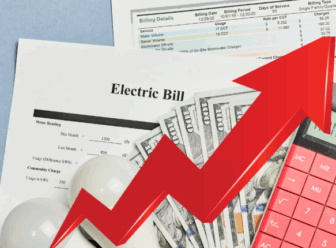Back in September, I wrote about the the power of energy efficiency loan funds, and how they could be utilized by local and state governments to eliminate the barrier of upfront financing for energy efficiency improvements which often prevents them from happening. When my student group UMD for Clean Energy was involved in our local city council elections this past fall, the priority policy of our platform was a low-interest energy efficiency loan fund. We managed to elevate this to being an important issue in the elections, and our city council has made it a priority to push for tweaking a state law that would allow municipalities in Maryland to undertake this kind of a program.
Last week, President Obama announced that as part of his new jobs bill, a cash for caulkers program that puts people back to work by weatherizing houses, will be a key part of the legislation. However, as Dave Roberts notes a Grist, right now “public statements from the administration have focused almost entirely on cash rebates, which would pay back homeowners up to half the cost of various retrofit investments. There’s a way to get far more bang for federal bucks, though, and it has to do with financing”
Simple rebates are better than nothing, but we want to implement the best practices possible that get the most bang for the buck. That has proven to be energy efficiency loan funds that use public money to leverage private capital. A good model is New York’s loan program that was passed back in September, which takes $112 million dollars in public funds, and leverages private capital for $5 billion dollars of energy efficiency loans, along with a little of the money being spent on green jobs training programs tied to the retrofits done because of the legislation. It’s expected to create 16,000 new jobs.
Fortunately, US Senator Jeff Merkley has sent President Obama a letter suggesting that Cash for Caulkers shouldn’t use rebates, but loan guarantees
“I strongly believe that to achieve these [energy saving and job creating] goals, the program must include financing assistance for residential and commercial building owners who cannot afford the upfront cost of a home renovation but who could pay for it out of the savings they will see on their energy bill. Financing assistance can allow federal dollars to be leveraged substantially farther than a rebate program. For example, appropriating $2 billion for loan guarantees could allow $20-$40 billion in financing.”
Smart! Senator Merkley would know something about this kind of a program. In Portland Oregon, they have a similar program called Clean Energy Works, which Grist wrote about in October
“The program uses $2.5 million in Energy Efficiency and Conservation Block Grant funds the city received through the American Recovery and Reinvestment Act as seed money to start a revolving loan fund that will enable Portland homeowners to improve the energy efficiency of their homes at no up-front cost. The energy improvements that will be available to homeowners during the pilot phase of the program, which will cover 500 homes, include insulation, air sealing, duct sealing, and improvements to space heating and water heating systems.”
Let’s not just hope, but encourage President Obama and Congress to get the Cash for Caulkers program right. If it works well, similar initiatives will emerge around the country, and in future Congresses.
Cross-posted from: The Dernogalizer





